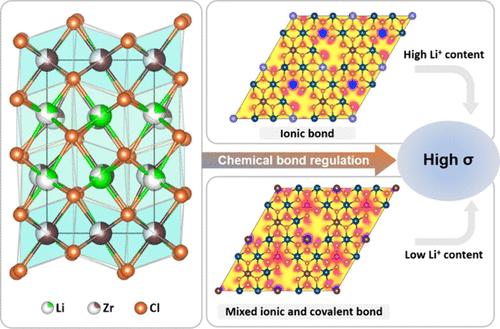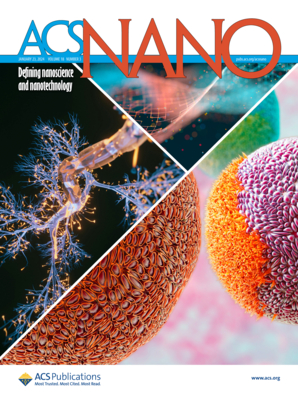Regulating Chemical Bonds in Halide Frameworks for Lithium Superionic Conductors
IF 15.8
1区 材料科学
Q1 CHEMISTRY, MULTIDISCIPLINARY
引用次数: 0
Abstract
Developing solid-state electrolytes (SSEs) is a critical task for advancing all-solid-state batteries (ASSBs) that promise a high energy density and improved safety. The dominant strategy in engineering advanced SSEs has been substitutional doping, where foreign atoms are introduced into the atomic lattice of a host material to enhance ionic conduction. This enhancement is typically attributed to optimized charge carriers’ concentration or lattice structure alterations. In this study, we extend the concept of substitutional doping to explore its effects on chemical bond modulation and the resulting impact on ionic conduction in halide SSEs. As a case of study, we demonstrate that cation dopants with high charge density indices (e.g., Al3+ and Fe3+) can increase the covalency of metal–halide (M–X) bonds and induce the local asymmetric field of force, resulting in higher site energy and lower migration barriers, which significantly enhance the ionic conduction in halide frameworks. Specifically, we developed a series of halide SSEs with ionic conductivities exceeding the benchmark value of 1 mS cm–1 at room temperature. Detailed investigations, including neutron powder diffraction, pair distribution function analysis, and first-principles calculations, are performed to gain an insight into the mechanisms behind this adjustment. Furthermore, these materials exhibit enhanced deformability due to increased covalency of the metal halide framework, enabling high-performance ASSB prototypes operatable at low stacking pressures (<10 MPa). These advancements deepen our understanding of superionic conduction in halide SSEs and mark an important step toward the practical application of ASSBs in the future.

求助全文
约1分钟内获得全文
求助全文
来源期刊

ACS Nano
工程技术-材料科学:综合
CiteScore
26.00
自引率
4.10%
发文量
1627
审稿时长
1.7 months
期刊介绍:
ACS Nano, published monthly, serves as an international forum for comprehensive articles on nanoscience and nanotechnology research at the intersections of chemistry, biology, materials science, physics, and engineering. The journal fosters communication among scientists in these communities, facilitating collaboration, new research opportunities, and advancements through discoveries. ACS Nano covers synthesis, assembly, characterization, theory, and simulation of nanostructures, nanobiotechnology, nanofabrication, methods and tools for nanoscience and nanotechnology, and self- and directed-assembly. Alongside original research articles, it offers thorough reviews, perspectives on cutting-edge research, and discussions envisioning the future of nanoscience and nanotechnology.
 求助内容:
求助内容: 应助结果提醒方式:
应助结果提醒方式:


